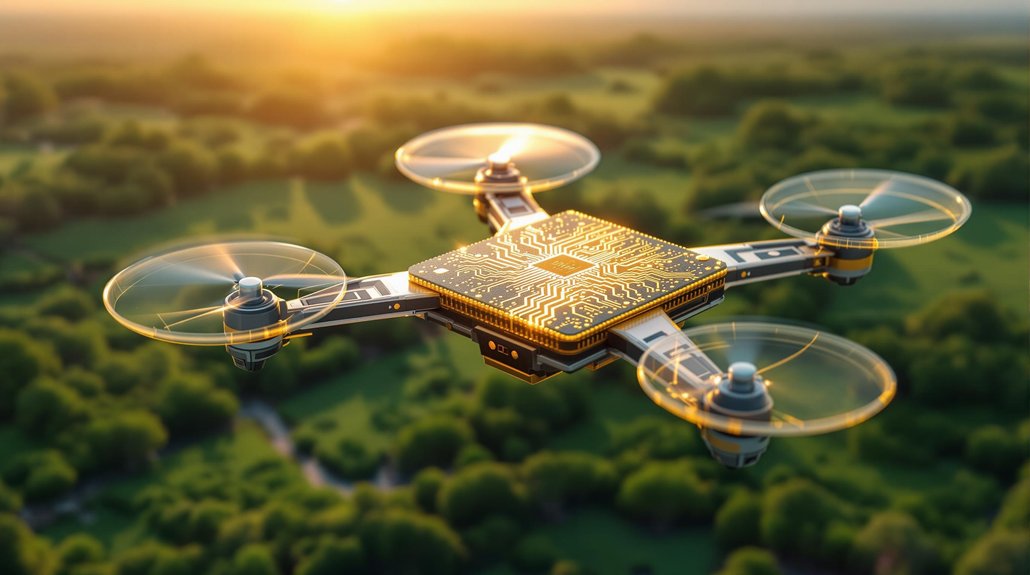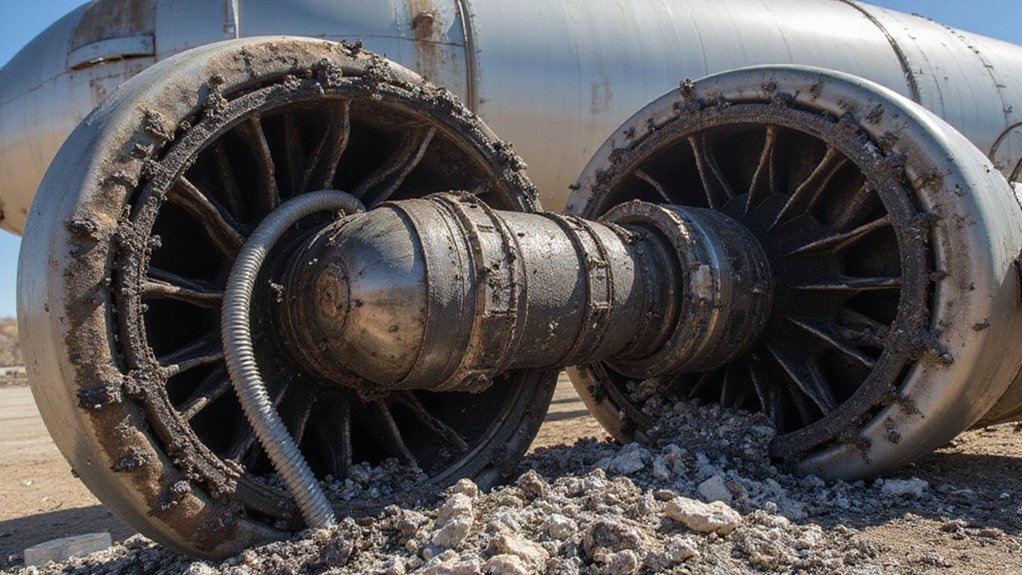Scientists have developed tiny AI chips that mimic animal brains, making drones smarter and more efficient. These neuromorphic chips process images 64 times faster than regular GPUs while using three times less power. Drones with these chips can learn from experiences, adapt to changing light, and navigate through difficult areas without human control. The technology enables smaller, more agile drones with longer flight times. What might this breakthrough mean for everyday applications and privacy concerns?
Soaring into the future, a groundbreaking neuromorphic AI chip is transforming how drones fly. This tiny technology mimics animal brain functions to make drones more energy efficient and smarter. The chip processes images 64 times faster than traditional GPUs while using three times less energy, which means drones can stay in the air longer.
The new chip is making drones smaller and more agile, similar to insects. By removing the need for heavy hardware, these drones can move quickly and respond to their surroundings in real time. This technology is particularly useful when drones need to fly in areas without GPS signals or with high electromagnetic interference.
Insect-like agility emerges as neuromorphic chips eliminate bulky hardware, revolutionizing drone flight in GPS-dead zones.
Different types of AI chips serve various purposes in drone flight. GPUs handle parallel processing for deep learning, while FPGAs offer customization for specific drone functions. ASICs provide high efficiency for specialized tasks. Engineers carefully balance power use and size when selecting these components. Drones equipped with these specialized chips enhance real-time object identification capabilities, significantly improving their autonomous navigation compared to traditional drones.
What makes these neuromorphic chips special is their ability to learn from experiences. Drones equipped with this technology can improve their performance over time, getting better at avoiding obstacles and maintaining stable flight. They combine onboard data analysis with energy-efficient sensors to extend flight time and prevent overheating. The neuromorphic cameras function exceptionally well in varying light conditions, similar to how animal eyes adapt to different environments.
The sensors give drones 360-degree visibility, eliminating blind spots. This helps them map their surroundings and navigate through dense areas safely. Even in low-light conditions, these advanced drones can fly autonomously and make split-second decisions when facing unexpected situations. Unlike traditional processors that follow von Neumann architecture, these chips are designed specifically for massive parallel processing.
Looking ahead, this technology could lead to insect-sized drones with remarkable thinking abilities. Industries like agriculture and logistics stand to benefit from these precise, automated flying machines.
Future developments might enable fully autonomous drone swarms that work together on complex tasks. As the technology improves, we’ll see even faster processing speeds and better energy efficiency in each new generation of these brain-inspired chips.









